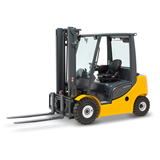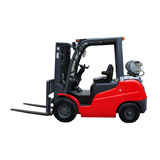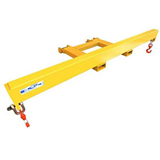As Australia’s largest independent forklift and transport company, we offer a range of forklift attachments and services; including forklift jib hire and forklift jibs for sale.
Heavy machinery and its associated processes are complex and can be challenging to understand. That’s why we’ve put together a handy all-in-one guide for the different styles of forklift jib attachments. Continue reading to gather the information you need to operate them safely and confidently.
WHAT IS A FORKLIFT JIB ATTACHMENT?
A forklift jib attachment is a type of specialised fitting used with forklift trucks. They are made to slide and secure easily onto the machine, usually via a hook at the attachment site. Jib attachments are designed for a particular application, and, when used safely and correctly, can increase the machine’s efficiency and fuel consumption
DIFFERENT TYPES OF FORKLIFT ATTACHMENTS
There are many different types of forklift jib attachments, suitable for a variety of lifting applications. They can be broadly categorised as fixed forklift jibs, extendable forklift jibs, and adjustable forklift jibs.
FIXED FORKLIFT JIB
These slip-on attachments are fixed into a horizontal position on the forklift, and are typically used for repetitive lifting and maintenance tasks. They are able to manoeuvre in small spaces, and can effectively extend the reach of most forklifts.
EXTENDABLE FORKLIFT JIB
The adjustable length of extendable forklift jibs can accommodate larger and irregularly shaped loads, and significantly extend the machine’s functionality and reach. Some models feature multiple hooks and shackles to provide the lifted load with extra support. The extendability and safe lifting capacity of these attachments will vary.
ADJUSTABLE FORKLIFT JIB
This versatile attachment is designed with a tilt function, allowing the fork to be positioned at different angles to accommodate different load sizes and shapes. Adjustable forklift jibs are held in place via safety chains, and are suitable for use with most forklift models and lifting applications. The specific angle the jib is placed in will determine its safe lifting capacity.
FORKLIFT JIB SAFETY – HOW TO ENSURE YOUR STAFF ARE SAFE
Due to the inherent risks associated with heavy machinery, staff safety should always be the highest priority when operating forklifts. Any staff member who operates a forklift and its accessories should be appropriately trained and certified to do so. All attachments should be used in accordance with their specified purpose.
Prior to use, the operator should confirm that their attachment jib is compatible with their forklift and supported by its data plate. The forklift tynes that the jib is slid onto should be inspected to ensure there are no signs of damage. Once the attachment has been fitted to the truck, it should be secured with a locking device. It’s important to note the maximum safe lifting weight of the attachment jib being used. This is specified on the manufacturer’s instruction manual.
HOW OFTEN SHOULD I GET MY JIB ATTACHMENTS SERVICED?
It’s important to schedule regular maintenance for your forklift jib attachments. A qualified inspection officer should perform this service to ensure that the attachments are in safe operational order.
During the service, the inspection officer will inspect the jib for any damage, ensure that its hook/s and shackle/s are in safe working order, and ensure that it is used with a compatible forklift with tynes that are not worn or damaged.
Waverley Forklifts offer a convenient Service Agreement that removes the hassle of maintenance for your forklift attachments. After inspecting your equipment, one of our technicians will advise you on the time needed between services and provide you with an approximate cost for maintenance. Services will be carried out on-site by one of our mobile technicians. We’ll even give you a call to remind you when your service is due.







-160x160-state_article-rel-cat.png)








